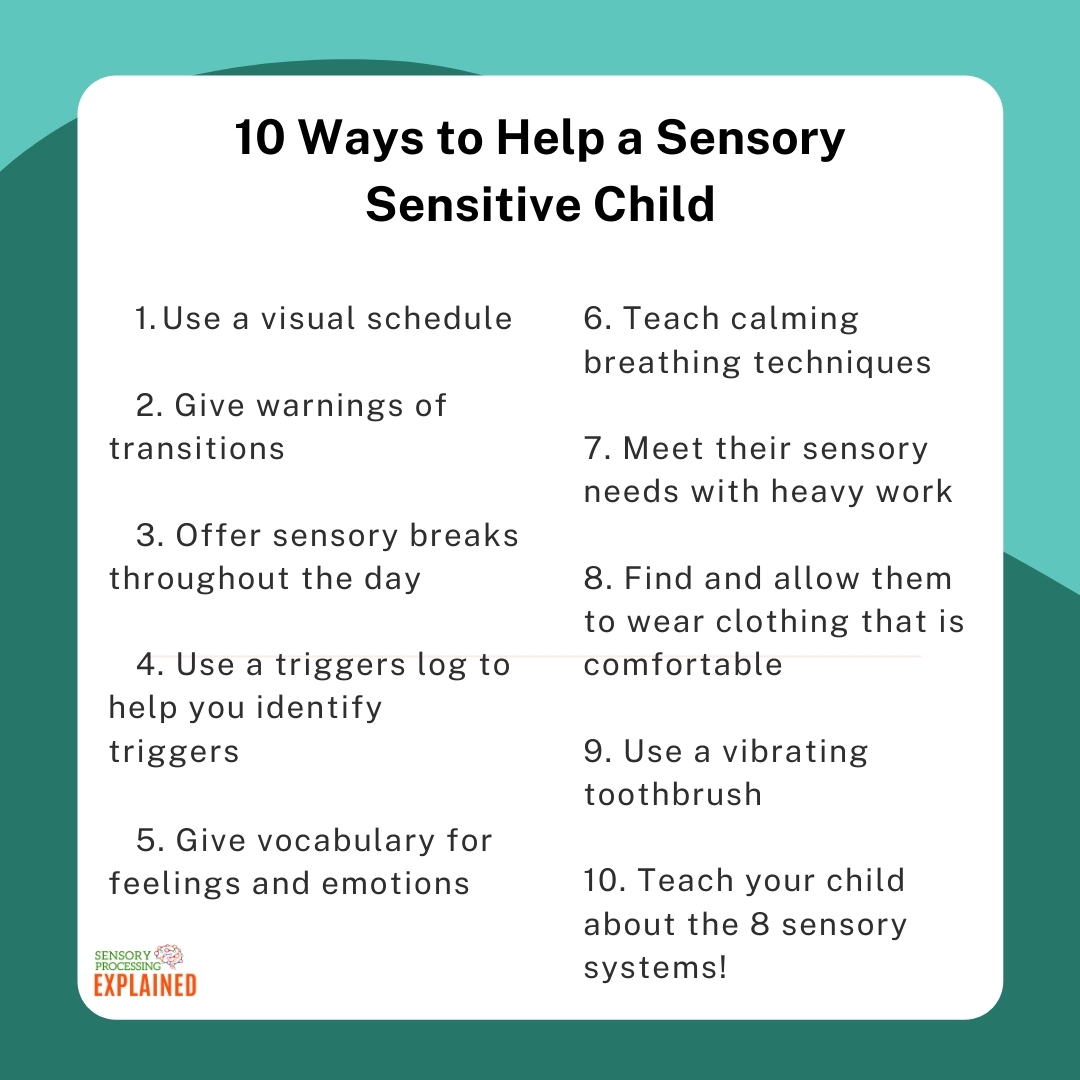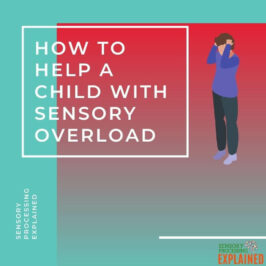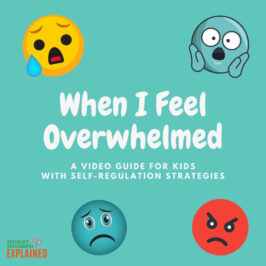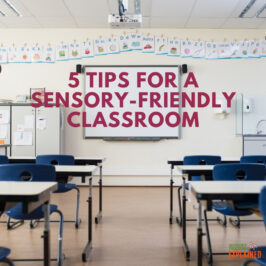Do you have a child who is sensitive to different sensory inputs? ⠀ ⠀
Being a kid with sensory needs can make even the simplest things like combing your hair or getting dressed feel challenging. ⠀ ⠀
Using the strategies below, you can make life easier for your child or students and cut back on sensory meltdowns and day-to-day battles.⠀ ⠀

10 Ways to Help a Sensory Sensitive Child
1. Use a visual schedule. This allows the child to know exactly what to do and what’s coming next. It can ease the pain of transitions and lessen the chance of meltdowns. For some kids, they need the tasks broken up into smaller steps, so look for a visual schedule that breaks things down.⠀ ⠀
2. Give warnings for upcoming transitions and allow for extra time so that your child can adjust.⠀ ⠀
3. Offer sensory breaks throughout the day. This gives your child the necessary sensory input. They also make good transition bridges.⠀ ⠀
4. Use a Sensory Triggers Log to help you identify your child’s sensory triggers. This will allow you to avoid them or make changes to your child’s environment to accommodate them.⠀ ⠀
5. Work on giving them an emotional vocabulary so that they can express their feelings.⠀ ⠀
6. Teach your child calming breathing techniques.⠀ ⠀
7. Meet your child’s sensory needs during the day with sensory activities and heavy work opportunities. This will not only help them all day long, but it will also help them sleep better at night.⠀ ⠀
8. Don’t die on the clothing mountain. Let your child wear what’s comfortable for them. Be a sensory detective to discover why certain articles of clothing bother them. This will help you find solutions.⠀ ⠀
9. Have your child use a vibrating toothbrush. Not only will this add more sensory input to their day, but it will also decrease oral sensitivity and can eventually help with food battles. ⠀
10. Teach your child about sensory processing and the 8 sensory systems so that they can better identify their needs and voice them to you.⠀We have a great resource for this, our Teaching Kids About Sensory Toolkit.
Is there anything you have found that works that you would add to this list? Share with us in the comments below.
For more free resources, check list these links below:







Ellie Hutcheon
Some great ideas here. I wonder if instead of saying ‘have your child using a vibrating toothbrush’, it might instead be ‘Encourage/ask your child to try a special toothbrush’; I’m thinking that for some children I vibrating toothbrush might be too much :)’.
Alessandra Kellermann
Exactly what I was thinking
Doraine Donaii
Do you have anything to help my son who don’t like to touch food, get messy..only likes pureed food and crackers
How can I help him?